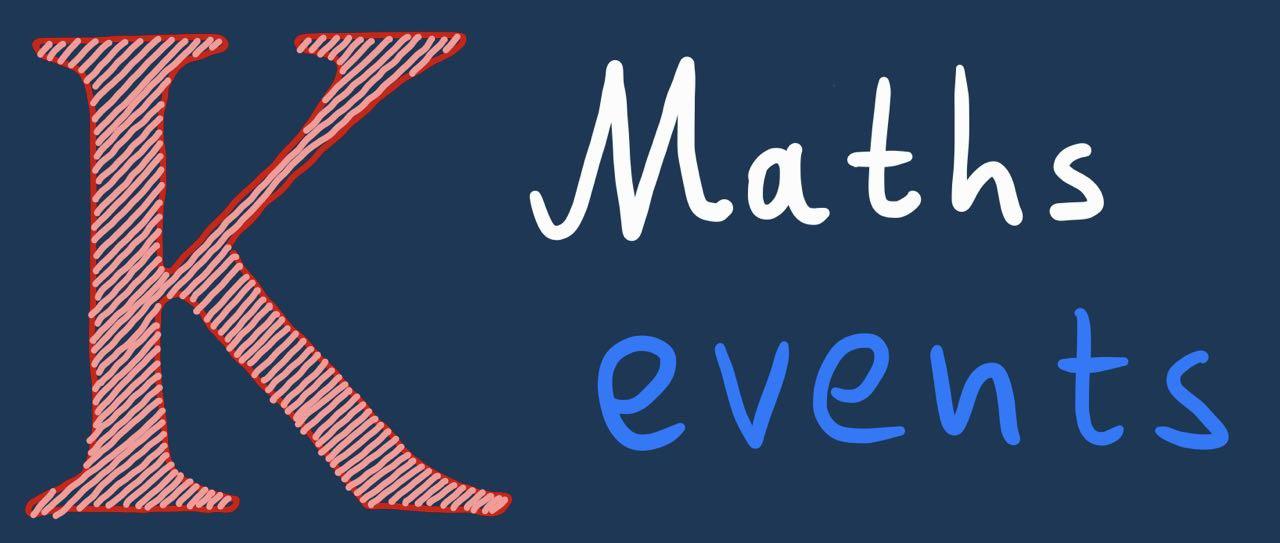Week 30.09.2024 – 06.10.2024
Monday (30 Sep)
PR KCL Probability Seminar: Stochastic Approximation for Banach Valued observation sequences
regular seminar Rajeeva Karandikar (Chennai Mathematical Institute)
| at: 14:00 - 15:00 KCL, Strand room: S3.32 abstract: | We will discuss Stochastic Approximation for Banach Valued observation sequences. First part of the talk we will consider Banach space satisfies appropriate geometric conditions. In the second half, we will consider Banach spaces that do not even satisfy Radon-Nikodym (such as L1[0,1] or C[0,1]) and in this case, we prove validity of stochastic approximation under suitable conditions on the error sequence. Keywords: |
Tuesday (01 Oct)
GE Singularities in mean curvature flow
regular seminar Stephen Lynch (KCL)
| at: 15:00 - 16:30 KCL, Strand room: S4.29 abstract: | Mean curvature flow moves a hypersurface in Euclidean space with velocity equal to its mean curvature vector. This evolution is described by a nonlinear weakly parabolic system. Variationally, it is a formal gradient flow for the volume functional. Solutions to mean curvature flow exhibit a huge variety of different kinds of singularities. For solutions which move monotonically (have nowhere vanishing mean curvature), however, these singularities exhibit enough structure so that they might eventually be completely classified. We will discuss the now essentially complete picture for surfaces in R^3 developed over the last 40 years, and then explore the dramatically more complicated setting of 3-dimensional hypersurfaces in R^4. Keywords: |
Wednesday (02 Oct)
TP Strings from Feynman Diagrams
Regular Seminar Edward Mazenc (ETH)
| at: 14:00 - 14:01 KCL Strand room: K3.11 abstract: | How are bulk strings related to boundary Feynman diagrams? I will give an overview of my work with Rajesh Gopakumar on deriving the closed string dual to the simplest possible gauge theory, a Hermitian matrix integral. Working in the conventional 't Hooft limit, we extract topological string theories which replace the minimal string away from the double-scaling limit. We show how to exactly reconstruct both the closed string worldsheet and its embedding into the emergent target space, purely from the matrix Feynman diagrams. I'll close by embedding our results in the broader context of AdS/CFT. Keywords: |
Thursday (03 Oct)
AN On the Sobolev removability of the graph of one-dimensional Brownian motion
regular seminar Cillian Doherty (Cambridge)
| at: 11:00 - 12:00 KCL, Strand room: S5.20 abstract: | A compact subset $K$ of the complex plane is said to be $W^{1,p}$ removable if any continuous real-valued function $f$ on $\mathbb{C}$ which is in the Sobolev space $W^{1,p}(\mathbb{C} \setminus K)$ is automatically also in the Sobolev space $W^{1,p}(\mathbb{C})$. This property is true for all values of $p$ for points and line segments, but false for sets with non-empty interior, and in general there is no simple condition to determine whether a given set is removable or not. In certain cases, there is a link between removability and how “rough” the set $K$ is. In particular, if $K$ is the graph of a function, it is known that its Hölder continuity is related to its removability. We will present new results on the removability of the graph of a one-dimensional Brownian motion on an interval and show that it is almost surely not $W^{1,p}$ removable for finite $p$, but is removable for $p = \infty$. This talk is based on joint work with Jason Miller. Keywords: |
Friday (04 Oct)
TP The Conformal Algebra on the Fuzzy Sphere
journal club Pannell William (KCL)
| at: 13:15 - 14:30 KCL, Strand room: Norfolk Building 342N abstract: | Fuzzy sphere regularization has proven to be a useful tool for deriving CFT data in a number of theories, most notably the 3d Ising model. Previous studies of these fuzzy sphere models relied explicitly upon matching with data known from other methods such as the conformal bootstrap, and were thus limited to already well-studied theories. Following two recent articles 2409.02998 and 2409.08257 I will detail how it is possible to explore the emergence of conformality within the constraints of the fuzzy sphere models themselves by explicitly realizing the generators of the conformal algebra as fuzzy sphere operators, and discuss their results for fuzzy sphere Ising model.
|
